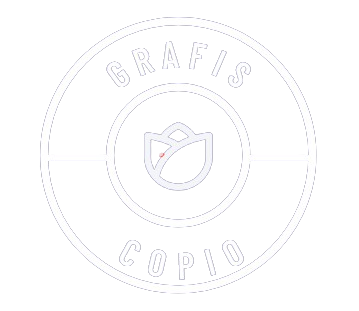Are you a small business owner looking to boost your branding? Want to create eye-catching graphics without breaking the bank? Look no further! We’re here to guide you in choosing the perfect graphic design software. In this article, we’ll help you reflect on your design goals, explore popular programs like Canva, Adobe Creative Cloud, and CorelDRAW Graphics Suite, and give you tips on finding the software preferred by employers. Get ready to take your small business graphics to the next level!
Factors to Consider
When choosing graphic design software for your small business, there are several factors to consider. First, think about your design goals. What type of graphic design projects do you want to complete? Are you focused on creating professional publications with precise layouts and styling, or do you need tools for advanced graphic design projects? It’s also important to reflect on your long-term interest in graphic design to ensure you choose software that aligns with your goals.
Another factor to consider is taking a graphic design course. Learning different software programs and gaining hands-on experience will help you understand which software best suits your design goals. Researching graphic design software is also crucial. Explore different programs, their features, costs, and usability. Consider recommendations from industry leaders and professionals to make an informed decision.
Identifying software programs preferred by employers is essential. Look for job listings to see which software employers prefer and analyze the profiles and portfolios of freelance designers in your desired field. Experimenting with different software tools is also recommended. Take advantage of free trials or basic plans to test software functionalities and complete small projects to assess the ease of use and overall experience.
Popular Graphic Design Software
If you are considering graphic design software for your small business, you may be wondering which popular programs are available to meet your design needs. When comparing graphic design software, it’s important to consider the pros and cons of each program, as well as the pricing options. Some popular graphic design software options include Canva, Adobe Creative Cloud, CorelDRAW Graphics Suite, Affinity Designer, and Sketch.
Canva is beginner-friendly and offers pre-designed templates for various publications. It’s best for precise layouts and styling for professional publications, and it has a one-time fee of $159.00. On the other hand, Adobe Creative Cloud provides extensive tools for professional designers and advanced graphic design projects. It offers subscription plans with varying costs.
CorelDRAW Graphics Suite is great for designing logos, brochures, and other marketing materials. It has a one-time fee of $499.00. Affinity Designer is known for its advanced vector design tools and is best for illustrations, branding, and web design. It has a one-time fee of $49.99. Lastly, Sketch is perfect for UI/UX design and web/app prototyping, with a yearly cost of $99.00.
Consider your specific project types and design goals when choosing the right graphic design software for your small business.
Canva
To start using Canva for your graphic design small business, you’ll need to purchase a one-time subscription for $159.00. Canva is a versatile graphic design tool that offers a range of features and templates to help you create professional designs. Here are three reasons why Canva is a great choice for your small business:
- Design trends: Canva stays up to date with the latest design trends, making it easy for you to create modern and visually appealing graphics that resonate with your target audience.
- Graphic design tools: Canva provides a wide variety of tools and resources to enhance your designs. From color theory and typography tips to image editing and layout customization, Canva has everything you need to bring your ideas to life.
- Design inspiration: Canva’s extensive library of pre-designed templates serves as a valuable source of inspiration. Whether you’re designing a social media post, flyer, or business card, you can browse through Canva’s templates to find ideas that suit your brand.
With Canva, you can elevate your graphic design game and create stunning visuals that capture the essence of your small business. So, why wait? Get started with Canva today and unlock your creative potential.
Adobe Creative Cloud
One option to consider for your graphic design small business is the Adobe Creative Cloud. Adobe Creative Cloud is a comprehensive suite of graphic design software options that provides extensive tools for creating, editing, and manipulating digital images. It is best suited for professional designers and advanced graphic design projects. The Adobe Creative Cloud offers a range of programs such as Photoshop, Illustrator, InDesign, and more, each with its own unique features and capabilities.
| Pros of Adobe Creative Cloud | Cons of Adobe Creative Cloud |
|---|---|
| Extensive tools for creating, editing, and manipulating digital images | Subscription-based pricing can be costly for small businesses |
| Industry-standard software used by professionals | Steep learning curve for beginners |
| Seamless integration between different Adobe programs | Requires a high-performance computer for optimal performance |
| Regular updates and new features added to the software | Some features may be complex and unnecessary for certain small businesses |
While Adobe Creative Cloud offers a wide range of features and benefits, it may not be the best fit for every small business. There are alternative software options available that may better suit the needs and budget of small businesses. Some popular alternatives include Canva, CorelDRAW Graphics Suite, Affinity Designer, and Sketch. These alternatives offer different pricing structures and features that may be more suitable for small businesses with limited budgets or specific design requirements. It is important to compare pricing and features to determine the best software option for your graphic design small business.
CorelDRAW Graphics Suite
Continuing the discussion on graphic design software options for small businesses, let’s delve into the features and benefits of CorelDRAW Graphics Suite.
- CorelDRAW Pricing: CorelDRAW Graphics Suite is available for a one-time fee of $499.00. This means that small businesses can have access to a comprehensive design software without the need for monthly or annual subscriptions.
- CorelDRAW vs Adobe: While Adobe Creative Cloud is a popular choice among designers, CorelDRAW Graphics Suite offers a cost-effective alternative. CorelDRAW provides a wide range of features, including vector illustration, layout, photo editing, and typography tools, making it suitable for small businesses looking to create professional marketing materials.
- CorelDRAW Features: CorelDRAW Graphics Suite is specifically designed for logo design and creating marketing materials such as brochures, flyers, and advertisements. With its powerful tools and intuitive interface, CorelDRAW allows small businesses to produce high-quality designs that effectively communicate their brand identity.
Affinity Designer
Now let’s dive into Affinity Designer, a powerful graphic design software option for small businesses like yours. Affinity Designer offers advanced vector design tools, pixel editing, and real-time editing capabilities, making it ideal for a wide range of graphic design projects. Whether you need to create illustrations, develop branding materials, or design websites, Affinity Designer has the features to meet your needs.
When considering long-term interest in graphic design, Affinity Designer is a cost-effective choice. With a one-time fee of $49.99, it provides a budget-friendly option compared to other software programs that require ongoing subscription fees. This makes it particularly appealing for small businesses looking to optimize their expenses.
Moreover, Affinity Designer is also favored by freelance designers. Its intuitive interface and powerful tools make it easy to learn and use, allowing freelancers to work efficiently and deliver high-quality designs to their clients. By choosing Affinity Designer, you’ll not only have access to a professional-grade software, but you’ll also be in good company with other industry professionals.
When making your software selection, consider the specific graphic design projects you want to tackle, your long-term interest in the field, and the preferences of employers and freelance designers in your desired industry. Affinity Designer can be a valuable addition to your design toolkit, providing the tools and capabilities you need to bring your creative vision to life.
Sketch
To explore the graphic design software option of Sketch, consider its features and benefits for your small business.
- Pros and Cons of Sketch:
- Pros:
- Intuitive and user-friendly interface
- Powerful vector editing capabilities
- Seamless collaboration and prototyping tools
- Cons:
- Limited compatibility with non-Mac platforms
- Steep learning curve for beginners
- Lack of advanced photo editing features
- Benefits and Limitations of Sketch:
- Benefits:
- Ideal for UI/UX design and web/app prototyping
- Efficient workflow with symbols and artboards
- Active community and frequent updates
- Limitations:
- Not suitable for complex print design projects
- Limited third-party plugin support compared to Adobe Creative Cloud
- Requires a Mac computer to use
- Comparison with Other Software:
- Sketch vs. Adobe XD:
- Sketch offers more advanced vector editing capabilities
- Adobe XD has stronger integration with other Creative Cloud apps
- Choose Sketch for UI/UX design and Adobe XD for more interactive prototypes
User Reviews, Tips, and Tricks:
- User Reviews:
- Positive feedback on Sketch’s ease of use and collaboration features
- Complaints about the lack of certain advanced features
- Tips and Tricks:
- Utilize plugins like Craft and Zeplin for enhanced collaboration
- Take advantage of Sketch’s responsive design features for designing across multiple devices
- Use symbols and nested symbols for efficient workflow and consistent design elements
How to Choose Graphic Design Software
Start by evaluating your design goals and the specific areas of graphic design you want to focus on. Consider the type of projects you want to complete and determine the specific areas of graphic design that interest you. Are you interested in creating logos, illustrations, or marketing materials? Understanding your design goals will help you narrow down your options when choosing graphic design software.
Next, take a graphic design course or gain hands-on experience using various software tools. This will give you the opportunity to learn different software programs and understand their functionalities. By gaining experience with different software tools, you can determine which ones align with your design goals and are easy for you to use.
Research different graphic design software programs and compare their features, costs, and usability. Consider recommendations from industry leaders and professionals, as well as your own must-have features for your software selection. Additionally, identify software programs preferred by employers in your desired field. Look for job listings and analyze the portfolios of freelance designers to see which software is commonly used in the industry.
Finally, experiment with different software tools by taking advantage of free trials or basic plans. Complete small projects using different software programs to assess their ease of use, features, and overall experience. This will help you make an informed decision when choosing the right graphic design software for your needs.
Considerations for choosing graphic design software include your design goals, hands-on experience, research, and experimentation. By taking these factors into account, you can find the best software that suits your needs as a beginner in graphic design.
Reflect on Your Design Goals
When reflecting on your design goals for your small business, you should consider the type of graphic design projects you want to complete. This will help you determine the specific areas of graphic design you want to focus on and guide your software selection process. It’s important to evaluate your long-term interest in graphic design, as it may influence the level of commitment you are willing to make to learning and using different software programs.
To make an informed decision, it is also crucial to understand industry standards and compare different software options. Explore the features, costs, and usability of various programs to find one that aligns with your design preferences and business needs. Additionally, consider recommendations from industry leaders and professionals, as well as the software commonly used by employers in your desired field.
Experimenting with different software tools can also be beneficial. Take advantage of free trials or basic plans to test software functionalities and complete small projects. This hands-on experience will give you a better sense of the ease of use, features, and overall experience with each software program.
Take a Graphic Design Course
Consider enrolling in a graphic design course to gain hands-on experience and learn the functionalities of different software programs. Taking a course offers numerous benefits, including the opportunity to gain practical knowledge and develop essential skills. Through hands-on experience, you can experiment with different tools and techniques, allowing you to understand which software aligns best with your design goals. Industry recommendations can also guide you towards the most widely used software programs in the graphic design field.
By enrolling in a graphic design course, you can learn from experienced instructors who can provide valuable insights and guidance. They can teach you how to navigate various software programs effectively and efficiently, ensuring that you make the most of their functionalities. Additionally, taking a course allows you to interact with fellow students who share your passion for design, providing a supportive learning environment.
Furthermore, a graphic design course can give you a solid foundation in design principles and techniques, which are essential for creating visually appealing and effective designs. You will learn about color theory, typography, layout, and composition, among other fundamental concepts. This knowledge will greatly enhance your ability to create visually stunning designs that communicate effectively.
Research Graphic Design Software
To begin your research on graphic design software, delve into the features, costs, and usability of different programs. Here are some tips to help you navigate your search:
- Pros and cons of free graphic design software:
- Free software can be a cost-effective option for beginners or those on a tight budget.
- However, they may have limited features and lack professional-grade tools.
- Consider your specific design needs and whether free software can meet them effectively.
- Comparing online graphic design tools:
- Online tools like Canva and Adobe Spark offer convenience and accessibility.
- They provide pre-designed templates and intuitive interfaces for quick and easy design.
- However, they may have limitations in terms of customization and advanced features.
- Tips for optimizing graphic design software performance:
- Regularly update your software to access the latest features and bug fixes.
- Close unnecessary programs or processes to free up system resources.
- Use keyboard shortcuts to improve efficiency and speed up your workflow.
When exploring graphic design software options, consider open source alternatives like GIMP or Inkscape. These programs offer powerful features and are free to use. However, they may have a steeper learning curve compared to commercial software.
For beginners, it’s important to choose software that is user-friendly and offers ample learning resources. Programs like Canva and Adobe Creative Cloud offer beginner-friendly interfaces and comprehensive tutorials to help you get started on your graphic design journey.
Identify Software Programs Preferred by Employers
Identify the software programs preferred by employers in the graphic design industry to enhance your job prospects and align your skills with industry standards. When it comes to employer preferences, conducting a software comparison is key. Employers often look for candidates who are proficient in popular graphic design software that meets industry standards. Some commonly preferred software includes Adobe Creative Cloud, Canva, CorelDRAW Graphics Suite, Affinity Designer, and Sketch. These software programs offer a range of functionalities that cater to different design needs.
By researching and familiarizing yourself with these software options, you can gain a better understanding of their features, costs, and usability. It is also helpful to analyze the profiles and portfolios of freelance designers in your desired field, as they often showcase the software they use. Additionally, looking at job listings in the graphic design industry can provide insights into the software preferred by employers.
To make an informed decision, consider the specific functionalities you require for your design projects. Experiment with different software tools by taking advantage of free trials or basic plans to assess their ease of use, features, and overall experience. By aligning your skills with the software programs preferred by employers, you can increase your job prospects and stand out in the competitive graphic design industry.



